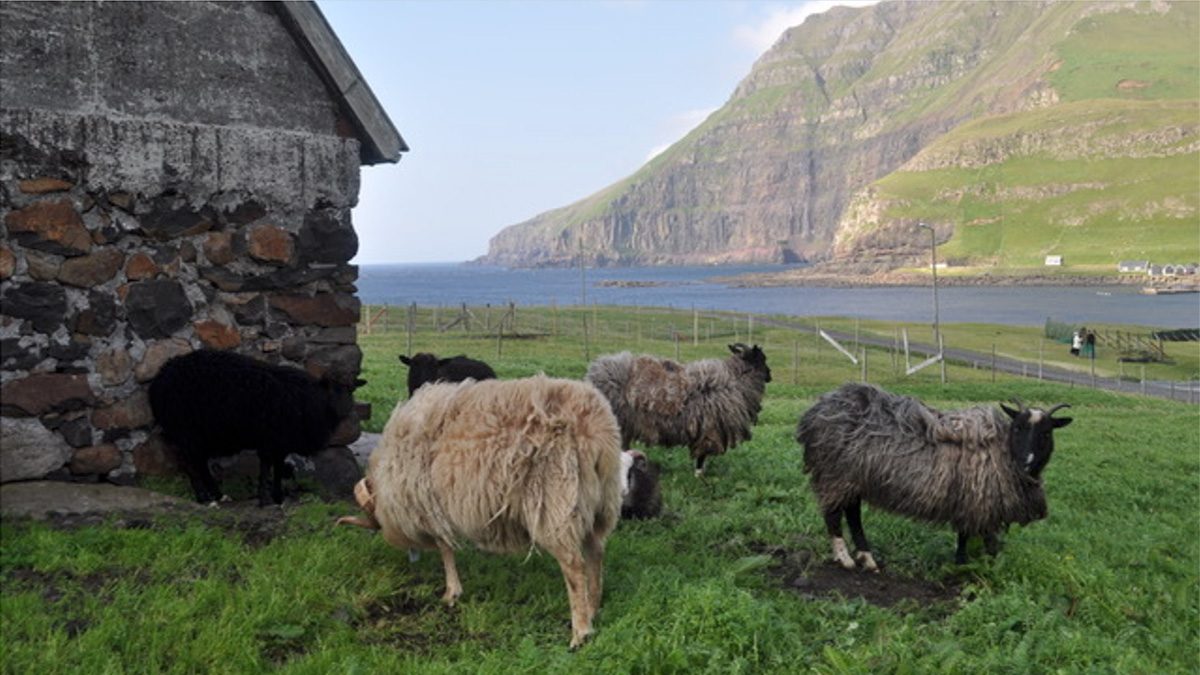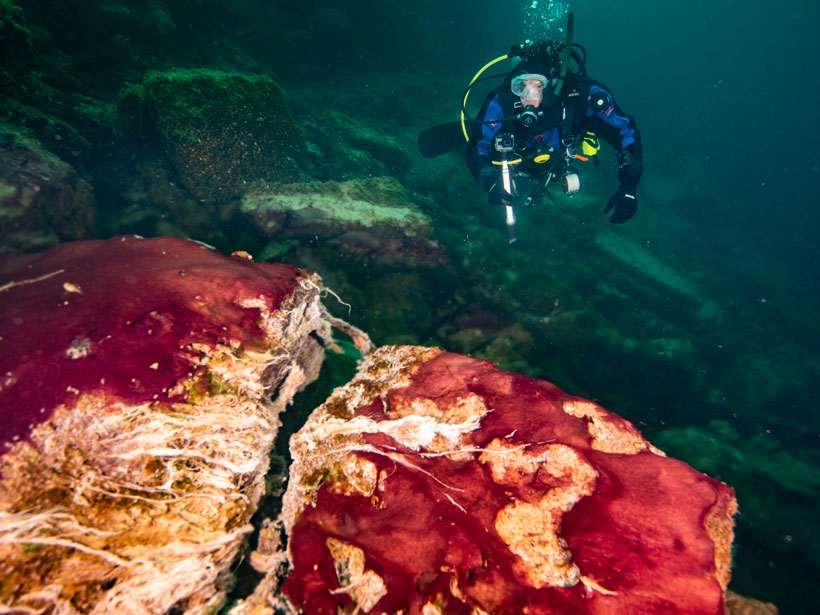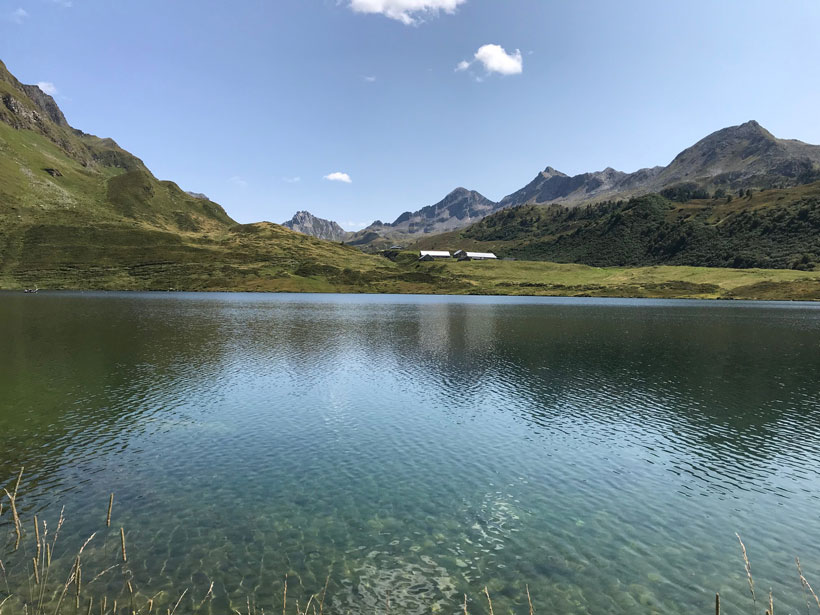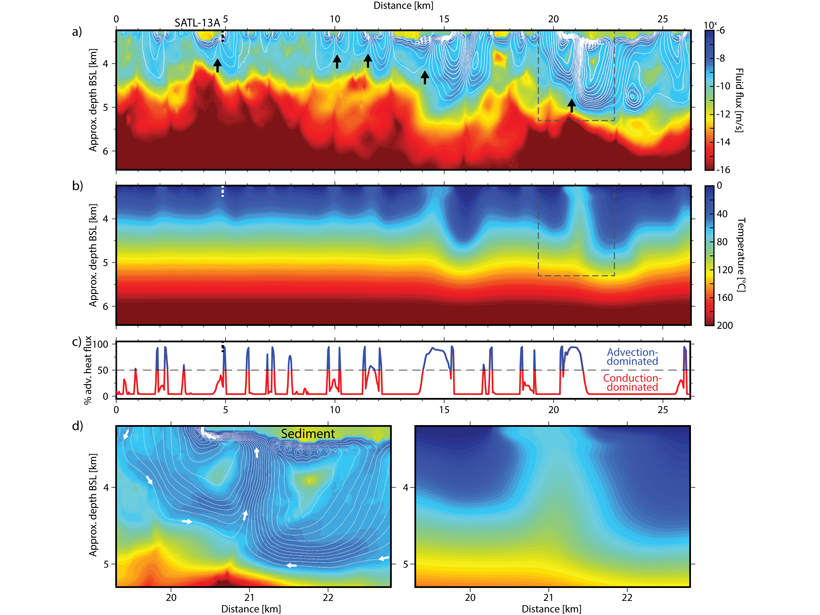Lake sediment is helping scientists resolve a decades-long historical mystery.
2021 CC BY-NC-ND
Chinese Architecture Evolved with Changes in Snowfall
Roof design in northern China changed over centuries in response to extreme snow events, new research suggests.
Freshwater Mussel Shells May Retain Record of Alpine Snowpack
A new study explores a possible proxy for seasonal freshwater input that could elucidate changes in alpine snowpack as the planet warms.
Días más largos probablemente incrementaron el oxígeno temprano de la Tierra
Tapetes microbianos en el sumidero del Lago Huron, combinado con modelado, sugiere que el cambio en duración del día de la Tierra podría haber jugado un rol principal en la oxigenación de la atmósfera.
Tools for Improved Drought and Flood Response
A new book presents recent advances in the modeling and remote sensing of droughts and floods of use to emergency response organizations and policy makers on a global scale.
Degraded Coral Reefs May Be More Resistant to Climate Change
New research on Kiribati’s beleaguered atolls paints a complex picture of reef recovery.
Purple Bacteria Fix Nitrogen in Proterozoic-Analogue Lake
A new study challenges the assumption that cyanobacteria were the only major nitrogen fixers in the Proterozoic eon.
Mechanisms of Hydrothermal Ocean Plate Cooling Revealed
A combination of waveform tomography and hydrothermal modelling allows characterizing the mechanisms and reach of fluid flux and ocean plate cooling near mid-ocean ridges with unprecedented detail.
Ancient Flint Tools Reveal Earth’s Changing Magnetic Field
Stone tools may provide data on paleomagnetism that are out of reach for other markers, such as prehistoric pottery.
Australia’s Unfolding Geoscience Malady
Brutal university cuts are putting at risk an industry crucial to addressing climate change Down Under and around the world. Saving geoscience will require a community reckoning.










